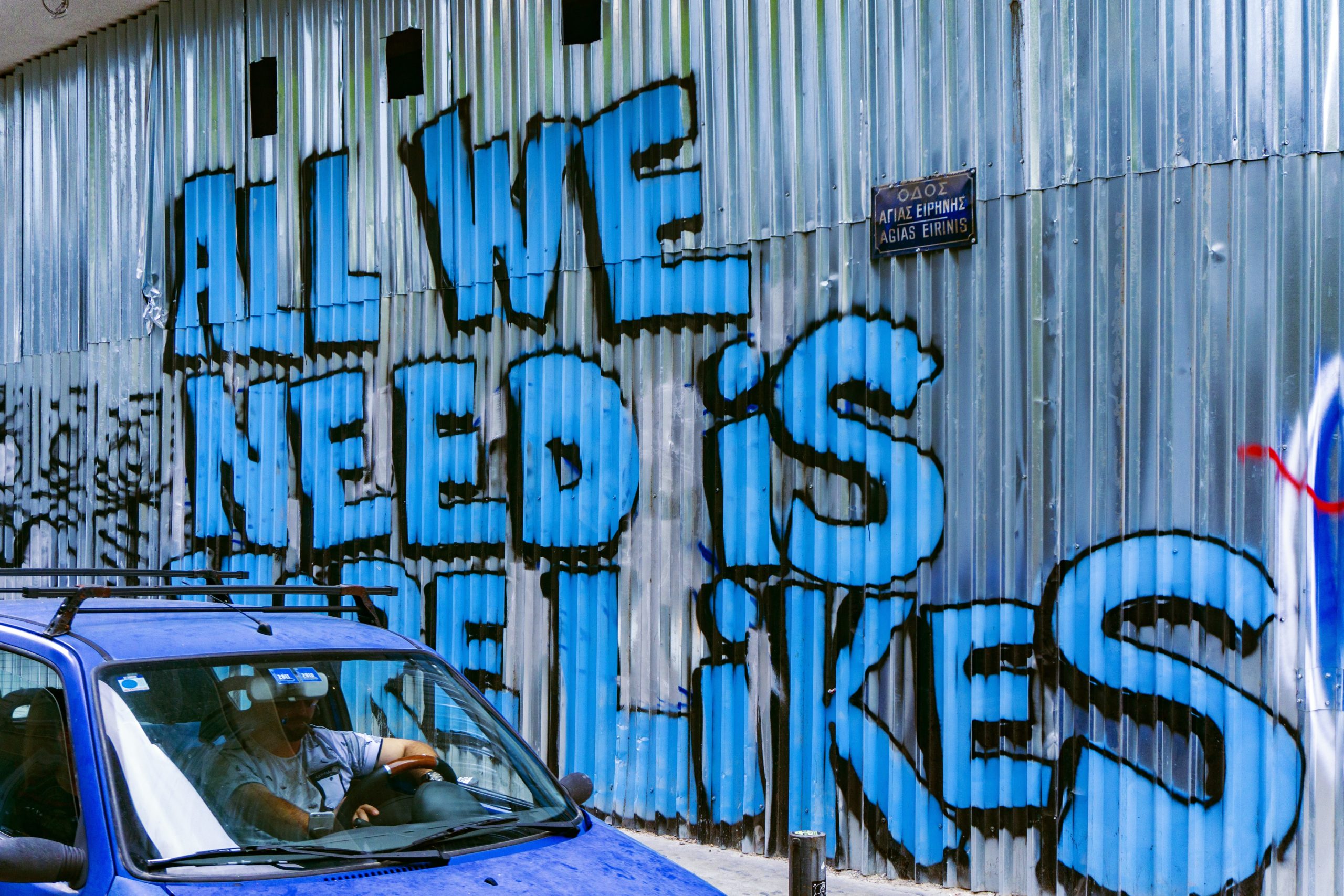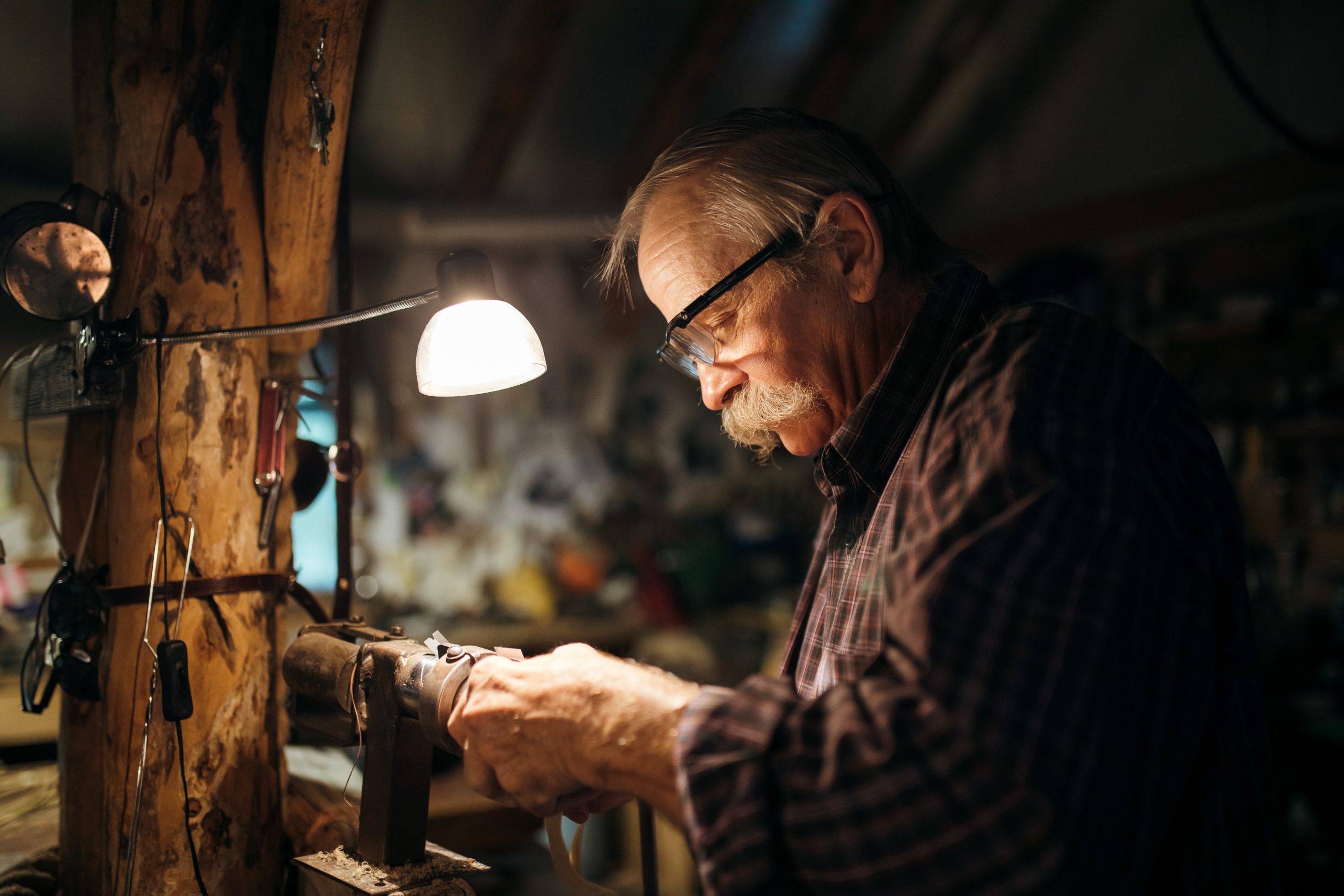
Brand Performance Is Determined by Recognition, History, and Placement

Yesterday, we ran into a new brand. Literally! It was on the floor of our local grocery store, right in the middle of the aisle. We had to maneuver our cart around it just to avoid an accident. But, we noticed a new brand in the process! We found out later that it wasn’t selling fast enough after being on the shelf for months, so it was getting closed out and discontinued. And the store knew that making people “trip” on it would help get rid of it—and fast. In other words, people wouldn’t have to be aware of the brand or be on the lookout for it. They’d just inevitably see it. And we did! It worked!
We wondered why that brand builder didn’t introduce his brand with a floor stack display in the first place. Getting yourself into a store is by no means a guarantee of success. In fact, it’s dangerous, because the store is now measuring your brand’s performance, starting with the day your product arrives in the store and ending with the day it leaves checkout. That timeframe is the speed of the “turn.” In other words, it’s how quickly your brand moves in that specific store.
We understand how difficult it is to get on the floor in a new store without recognition and history. That’s why we recommend that brand builders start slow, building a history of rapid growth—even if that growth is in just a few stores. We like to say, in the beginning, don’t sell your product farther than you can drive in a day. Why? Because your brand’s future performance is at stake!
Your Product is Lost on the Shelf. Once you have shelf space, go to that store at least twice a week. Find any reason why your product isn’t selling. You’re up against the clock! Your brand needs the volume in order to validate a display stack. The attention you’ll have to put into just merchandising in these initial stages will prevent brand expansion. But you shouldn’t try to expand until you excel in your first few stores. Through demos, neighborhood events, or in-store sampling, get that store’s customers to buy your brand—quickly! That brand we ran into clearly did not.
Your Reputation Precedes You. After your product flies off the shelf, then you are in a better position to propose a floor display. Even still, you must be persistent and visit the store regularly. Think of it this way—you’re investing in your reputation, even though the merchandising overhead can push you into the negative. You want that specific store to think of your brand as a “hot mover!” And, take note of the display volume sold over the selling period. That is the most important performance report your next retailer will want to see. They will use this to decide whether or not you get into that next store at all, or claim that sought-after floor space. The more floor space, the better the chances your product will sell.
And the Rich Get Richer! After enough effective floor displays, new opportunities will begin to soar. Larger displays from retailers will create heightened brand awareness, quicker brand growth, and of course, more sales. People will see you as a display brand. Unless you can pay large sums for slotting allowances (where legal), you have to earn your way up to this status.
These are only a few reasons why it’s crucial to be a big hit in a small place right off the bat, and double up on your incremental achievements. Happy selling!
For more, read on: http://csnetworkadvis.staging.wpengine.com/advisor/michael-houlihan-and-bonnie-harvey/
Preserve Founders Legacy through Story Performed by Actors with Sound Effects and Music
DOES YOUR HISTORY, FOUNDING SPIRIT, & GUIDING PRINCIPLES GET LOST OVER TIME?
Does your growth result in specialization, turf battles, corporate malaise, costly employee turnover, and lack of engagement and loss of the big picture?
"Any company that works intentionally on their culture will like this product for on-boarding."
-Bill Higgs, Host, Culture Code Champions Podcast
"TRANSFORMATIONAL ! Tremendous potential for CEO's to tell their story in a new way!"
-Robert Reiss, Forbes Magazine
After building & selling the famous Barefoot Wine Brand and writing the NYT's Bestseller, The Barefoot Spirit, used in 60 schools of entrepreneurship, and after a decade of being trusted advisors to startups, buildups, and buildouts, Michael Houlihan & Bonnie Harvey have developed Business Audio Theatre. As workplace culture experts, they believe the best way to increase engagement and reduce turnover is through story. They believe the best way to convey business story is through audio theatre provided to new employees on day one. Identification with the founders, their story, and their principles is the basis for identification. Identification is the basis for engagement. Engagement is the basis for longevity. Find out more!
Watch C-Suite TV Interview with Taryn Winter Brill:
Listen to The Barefoot Spirit from the C-Suite Library
Call: 707-484-1600
EMAIL: Sales@TheBarefootSpirit.com
Michael & Bonnie in Action:
1.5 minute: https://barefootspirit.wistia.com/medias/svuthvx4uy
2.5 minute: https://barefootspirit.wistia.com/medias/q1t21okz9f
3 minute: https://barefootspirit.wistia.com/medias/8y5btoyfrw
10 minute: https://barefootspirit.wistia.com/medias/8crj4p1hg9
|Welcome to Business Audio Theatre the Most Effective Onboarding Tool to Reduce Turnover and Increase Engagement
Preserve Founders Legacy through Story Performed by Actors with Sound Effects and Music
DOES YOUR HISTORY, FOUNDING SPIRIT, & GUIDING PRINCIPLES GET LOST OVER TIME?
Does your growth result in specialization, turf battles, corporate malaise, costly employee turnover, and lack of engagement and loss of the big picture?
"Any company that works intentionally on their culture will like this product for on-boarding."
-Bill Higgs, Host, Culture Code Champions Podcast
"TRANSFORMATIONAL ! Tremendous potential for CEO's to tell their story in a new way!"
-Robert Reiss, Forbes Magazine
After building & selling the famous Barefoot Wine Brand and writing the NYT's Bestseller, The Barefoot Spirit, used in 60 schools of entrepreneurship, and after a decade of being trusted advisors to startups, buildups, and buildouts, Michael Houlihan & Bonnie Harvey have developed Business Audio Theatre. As workplace culture experts, they believe the best way to increase engagement and reduce turnover is through story. They believe the best way to convey business story is through audio theatre provided to new employees on day one. Identification with the founders, their story, and their principles is the basis for identification. Identification is the basis for engagement. Engagement is the basis for longevity. Find out more!
Watch C-Suite TV Interview with Taryn Winter Brill:
Listen to The Barefoot Spirit from the C-Suite Library
Call: 707-484-1600
EMAIL: Sales@TheBarefootSpirit.com
Michael & Bonnie in Action:
1.5 minute: https://barefootspirit.wistia.com/medias/svuthvx4uy
2.5 minute: https://barefootspirit.wistia.com/medias/q1t21okz9f
3 minute: https://barefootspirit.wistia.com/medias/8y5btoyfrw
10 minute: https://barefootspirit.wistia.com/medias/8crj4p1hg9
|Welcome to Business Audio Theatre the Most Effective Onboarding Tool to Reduce Turnover and Increase Engagement
Preserve Founders Legacy through Story Performed by Actors with Sound Effects and Music
DOES YOUR HISTORY, FOUNDING SPIRIT, & GUIDING PRINCIPLES GET LOST OVER TIME?
Does your growth result in specialization, turf battles, corporate malaise, costly employee turnover, and lack of engagement and loss of the big picture?
"Any company that works intentionally on their culture will like this product for on-boarding."
-Bill Higgs, Host, Culture Code Champions Podcast
"TRANSFORMATIONAL ! Tremendous potential for CEO's to tell their story in a new way!"
-Robert Reiss, Forbes Magazine
After building & selling the famous Barefoot Wine Brand and writing the NYT's Bestseller, The Barefoot Spirit, used in 60 schools of entrepreneurship, and after a decade of being trusted advisors to startups, buildups, and buildouts, Michael Houlihan & Bonnie Harvey have developed Business Audio Theatre. As workplace culture experts, they believe the best way to increase engagement and reduce turnover is through story. They believe the best way to convey business story is through audio theatre provided to new employees on day one. Identification with the founders, their story, and their principles is the basis for identification. Identification is the basis for engagement. Engagement is the basis for longevity. Find out more!
Watch C-Suite TV Interview with Taryn Winter Brill:
Listen to The Barefoot Spirit from the C-Suite Library
Call: 707-484-1600
EMAIL: Sales@TheBarefootSpirit.com
Michael & Bonnie in Action:
1.5 minute: https://barefootspirit.wistia.com/medias/svuthvx4uy
2.5 minute: https://barefootspirit.wistia.com/medias/q1t21okz9f
3 minute: https://barefootspirit.wistia.com/medias/8y5btoyfrw
10 minute: https://barefootspirit.wistia.com/medias/8crj4p1hg9
- Tell Your Story With an Experienced and Award-Winning Team - December 10, 2020
- The Romance of the Wine Business – Not! - November 19, 2020
- Do a Re-Take on Your Miss-Take - October 23, 2020







